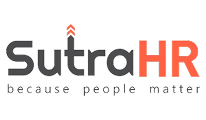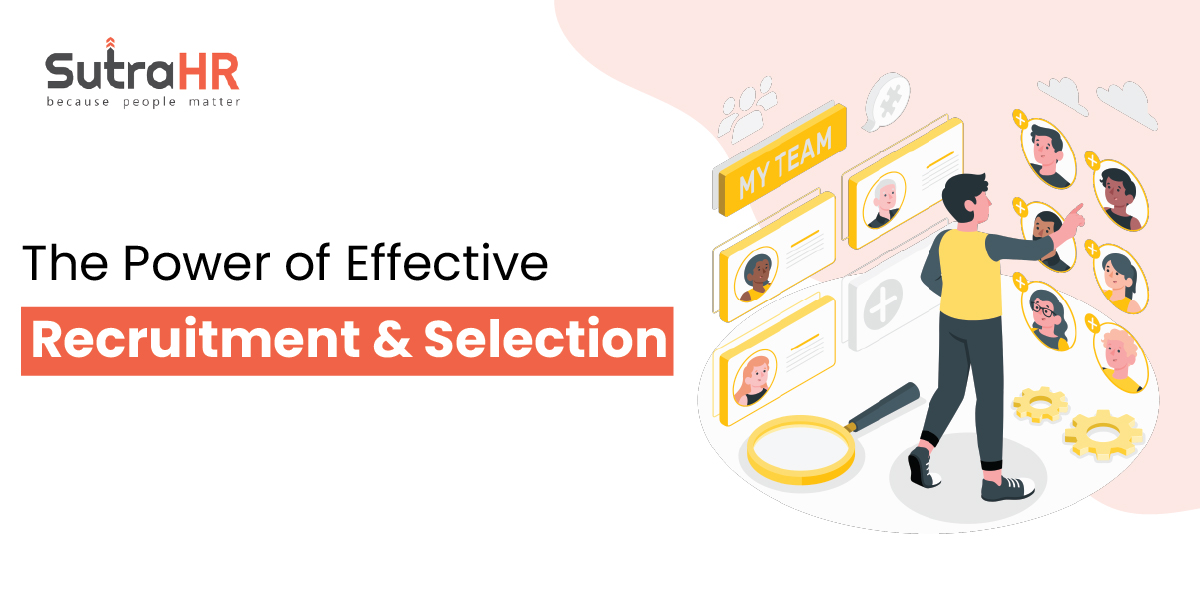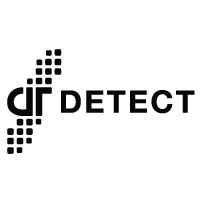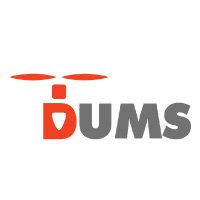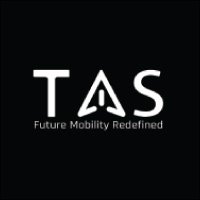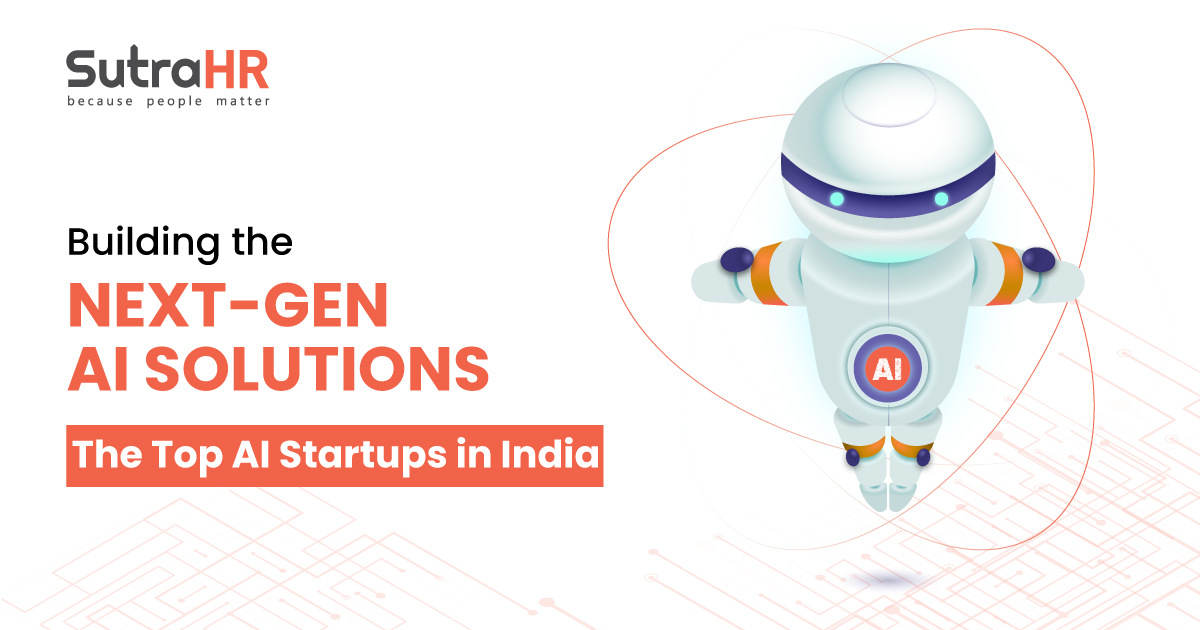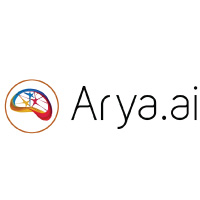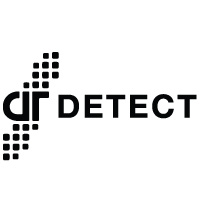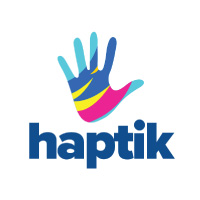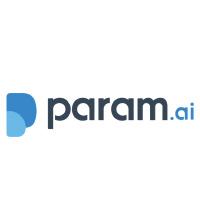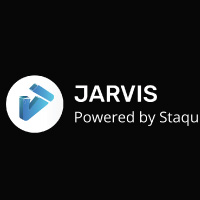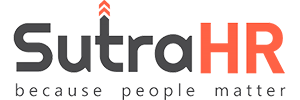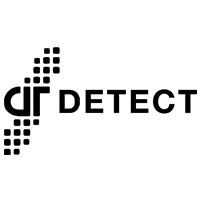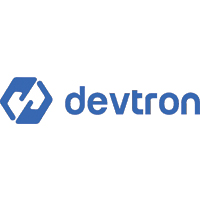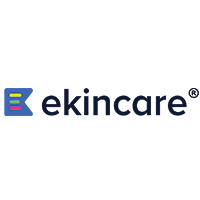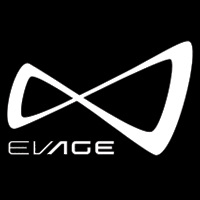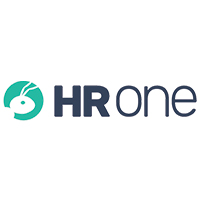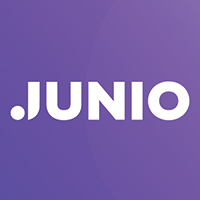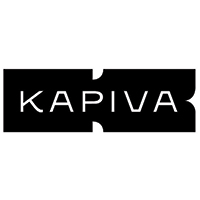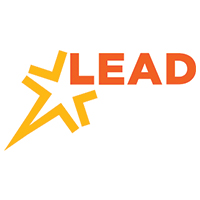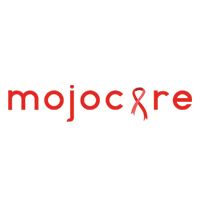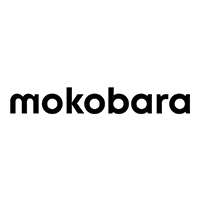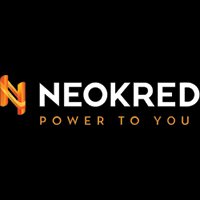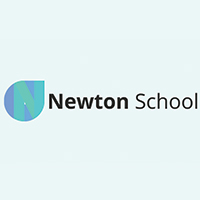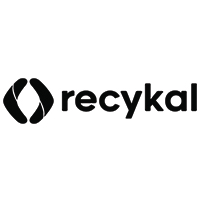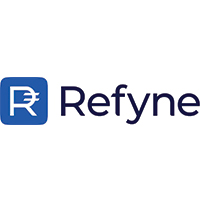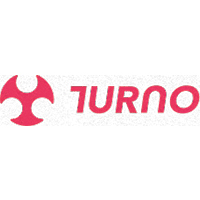Top startups in India for 2024
Lately, the Indian startup scene has been buzzing with groundbreaking ideas and mind-blowing innovations. To celebrate these extraordinary journeys and the hard work behind them, SutraHR has once again curated a list of the Top 100 Startups in India 2025.
These startups are not just businesses, but a true inspiration to all those looking to create something magical out of their dreams. So sit back and witness what makes these companies the Top 100 Startups in India.
Looking To Hire Top Talent?
If you are an employer seeking Tech and Non-Tech Talent for your company, please fill out the form below and we’ll get back to you shortly.
List of 100 Top Startups in India 2024

StartupHR Software
Description: StartupHR Software provides the best HR software for startups, enterprises, and businesses of all sizes. They are a marketplace for all the HR software in India as they have partnered with companies like DarwinBox, KekaHR, Zimyo, PocketHRMS, greytHR, and more. They have a dedicated team that understands the needs of a client and help them close the apt HR software for their company.
They have scheduled 10,000+ demos in one year for some of the most prestigious companies like Shiprocket, Enrich, Supersonic, and many more. Along with this, they have closed more than 7000+ companies and helped them choose the best HR Software.
Founders: Waqar Azmi
Founding Year: 2021
Funding: Nil
Investment: Bootstrapped
Industry: Internet Software & Services
Website: https://www.startuphrsoftware.com/

AbCoffee
Description: AbCoffee, a specialised coffee chain, is brewing up quite some stir as a new age coffee chain. They cater to consistent flavour through skillful roasting using their high:quality beans responsibly collected from India’s finest estates like Harley’s & Barbara. This startup hopes to become a go:to coffee spot, creating change and helping humans one cup at a time.
Founders: Abhijeet Anand
Founding Year: 2022
Category: Coffee
Funding: $2.3M
Investment: Tanglin Venture Partners, 100X.VC
Industry: Beverages
Website: https://abcoffee.in/

Almabetter
Description: Founded by IIT Kharagpur and IIT Delhi alumni, a pandemic born brand- AlmaBetter is a educational platform that vouches itself as a student-first institution. It provides risk-free, excellent education with a particular emphasis on interaction, empathy, and openness.
Founders: Shivam Dutta, Arshyan Ahsan and Alok Anand
Founding Year: 2020
Category: Online Learning Solutions
Funding: $2.7M
Investment: Kalaari Capital, Amplify,Sanjeev Kumar
Industry: EdTech
Google Rating: 3.7/5

amber
Description: Amber, the top student accommodation platform since 2016, has grown from a small group to a vibrant community of over 650 members, united by passion and commitment. With a stellar Glassdoor rating of 4.3, Amber fosters an inclusive work culture, where each day is an adventure of growth, innovation, and lasting connections. The company embraces adaptability through work-from-home options, a hybrid working model, and prioritizes work-life balance with a comprehensive leave policy, including special considerations for women.
At the core of Amber’s culture is innovation, actively shaping the landscape of global living and learning for over 80 million students. Joining Amber means immersing oneself in a workplace where creativity is nurtured, and the journey extends beyond providing student accommodation—it’s about finding a home within a culture that values diversity, growth, and the relentless pursuit of excellence. The next big adventure awaits at Amber.
Founders: Saurabh Goel and Madhur Gujar
Founding Year: 2016
Category: Student Accommodation Platform
Industry: Consumer Technology
Google Rating: 4.1/5
Ambition Box Rating: 4.5/5
Glassdoor Rating: 4.3/5
Website: https://amberstudent.com/

ANSI IT
Description: Meet ANSI Talent Solutions – your go-to for hiring the best remote talents quickly and affordably from India. ANSI is an IT consulting firm dedicated to reducing resource costs without sacrificing quality. Experience seamless offshore-onshore hiring with competitive salaries. Elevate your team with ANSI and discover simplicity in hiring excellence.
Founders: Sindhu Samudrala
Founding Year: 2022
Category: Staff Augmentation, IT Consulting
Funding: NA
Investment: NA
Google Rating: 4.0/5
Website: https://www.aansi.com/

Aretto
Description: Coming next in our list for Top 100 Startups in India 2024, Aretto is an innovative children’s shoe brand that uses Barefoot technology for holistic growth. Their footwear is made in India, environmentally safe materials, is 360 degrees flexible, breathable, long-lasting, and podiatrist certified too.
Founders: Satyajit Mittal and Krutika Lal
Founding Year: 2020
Category: Kids Footwear
Funding: $847.9k
Investment: Raunak Munot, Hardik Pandya, Shyam Raichura, Saurabh Puri
Industry: Footwear
Google Rating: 4.3/ 5

Age Care Labs
Description: Based in Gurugram, Age Care Labs is an elderly health and care services that provides health and emergency assistance on its platform. This startup has a strong vision to improve and support the quality and wellness of our elders.
Founders: Neha Sinha
Founding Year: 2019
Category: Elder Care Platform
Funding: $11M
Investment: Lumis Partners, Rainmatter
Industry: Healthcare
Google Rating: 4.8/5

Zepair
Description: Zepair is a startup that thrives in the gadget repair sector with its team of skilled technicians, giving dependable and speedy repair solutions for a wide range of electronic equipment and some major brands.
Founders: Mohit Jeswani
Founding Year: 2023
Category: Gadget Repair
Funding: NA
Investment: Bootstrapped
Industry: Tech
Google Rating: 4.1/5
Website: https://www.zepair.in/

NaturePro
Description: NATUREPRO, spearheaded by visionary founder Mohit Mohapatra, is not merely a brand but a champion of sustainable practices in the beauty and personal care industry. With an unwavering commitment to environmental responsibility, NATUREPRO has set a new standard for conscientious consumerism, emphasizing quality, safety, and innovation.
From globally sourced COSMOS/ECOCERT-approved ingredients to achieving MADE SAFE certification, every facet of NATUREPRO reflects its dedication to a greener planet. The integration of advanced AI technology, notably the Generative Pre-trained Transformer (GPT), into its Product Research and Development has propelled the brand into new realms of creativity and efficiency, earning accolades such as YourStory’s Top 500 Challenger Brands and the prestigious Exchange4Media D2C Revolution Award 2023.
Founder: Mohit Mohapatra
Founding Year: 2021
Category: Organic Beauty Products
Funding: NA
Industry: Beauty and Personal Care
Google Rating: 4.1/5
Website: https://www.naturepro.shop/

Baaz Bikes
Description: Baaz Bikes, an affordable EV mobility platform, manufactures and rents bikes to gig workers or “Baazigars,” aiming to create a cost-effective ecosystem with software, battery swaps, and bikes for efficient delivery services.
Founders: Anubhav Sharma, Shubham Srivastava, Abhijeet Saxena and Karan Singla
Founding Year: 2019
Category: EVs
Funding: $10.8M
Investment: AdvantEdge Founders, 9 Unicorns
Industry: Auto Tech
Google Rating: 4.4/5

Bakingo
Description: Bakingo is a certified online cake and bakery shop, specialising in delivering a variety of really delicious, designer and decoratives cakes for all types of celebrations. Operating in major Indian cities, they ensure prompt doorstep delivery, focusing on quality, flavour, and design.
Founders: Himanshu Chawla, Shrey Sehgal, and Suman Patra
Founding Year: 2013
Category: Cakes
Funding: $16M
Investment: Faering Capital
Industry: Food
Google Rating: 4.5/5
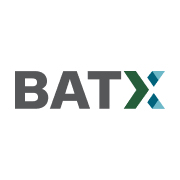
BatX Energies
Description: BatX Energies is an expert in recovering valuable metals such as lithium from Li-ion batteries through recycling. This startup’s goal is to advance a circular economy and sustainability. Additionally, they have also recently obtained funding to increase and improve their logistics and manufacturing.
Founders: Vikrant Singh and Utkarsh Singh
Founding Year:
Category:
Funding: $6.96M
Investment: Zephyr Peacock, Innovation Foundation, JITO Incubation, Tejas Shah, Survam Partners
Industry: Environment Tech
Google Rating: 4.5/5

BimaPlan
Description: Bimaplan is an insurtech startup helping drive insurance adoption through technology. India has a low insurance penetration, and the low/middle income population is underserved by legacy insurers and distributors. Bimaplan’s full-stack embedded insurance platform enables businesses to seamlessly distribute relevant insurance products to their customers.
Founders: Vikul Goyal
Founding Year: 2021
Category: Insurtech
Funding: $6.5M
Investment: Orios ventures, finsight ventures, 2 AM VC, Y-combinator
Google Rating: 4.1/5
Website: https://www.bimaplan.co/

BoldFit
Description: BoldFit is a D2C health and fitness passionate e-commerce brand. It has been dedicated to making fitness accessible, affordable and enjoyable for everyone. They attract health enthusiasts with great products like nutritional supplements and powders, yoga mats, watermarking sippers, home gym accessories etc.
Founders: Pallav Bihani
Founding Year: 2018
Category: Health and Fitness
Funding: NA
Investment: Bootstrapped
Industry: Healthcare
Google Rating: 4.2/5

BoldCare
Description: Bold Care is a pharmaceutical startup in India with high-quality, ethically sourced men’s healthcare products. These include sexual wellness and natural supplements and it is backed by expert consultations by professionals and rigorous product testing, making it trustworthy to be the pillar of redefined healthcare for men in India.
Founders: Harsh Singh, Mohit Yadav, Rahul Krishnan and Rohit Jadhav
Founding Year: 2019
Category: Online Pharmacy For Men
Funding: $3.16M
Investment: Angel List, Shiprocket, Stanford Angels & Entrepreneurs, Anthill, Industry- Healthcare
Google Rating: 4.8/5

Bombay Sweet Shop
Description: Bringing an upgrade in traditional sweet market, Bombay Sweet Shop, by Hunger Inc is an Indian startup that innovates traditional Indian sweets with modern ingredients, recipes and techniques.
Founders: Sameer Seth and Yash Bhanage
Founding Year: 2020
Category: Sweets
Funding: NA
Investment: Bootstrapped
Industry: Food Retail
Google Rating: 4.3/5

Bookee
Description: With its all-inclusive solutions for online streaming, customer acquisition, and management, Bookee is a SaaS business that is transforming the fitness industry and dramatically increasing client bookings and income. It offers fitness businesses easy-to-use tools for managing both in-person and online classes.
Founders: Vistar Singh and Rajat Hans
Founding Year: 2020
Category: Health and Fitness
Funding: NA
Investment: Abhishek Rungta, Antler, Pallavi Nadhani
Industry: Saas Platform
Google Rating: 4.8/5

BornGood
Description: Home care and hygiene products don’t need to be all chemical and harsh. Introducing Born Good- the home cleaners with the goodness of nature that is also good for nature! This brand became India’s first USDA certified range of eco-friendly, plant-based household, clothing, kitchen as well as concentrate cleaners.
Founders: Mohit Belani
Founding Year: 2019
Category: Home Care and Cleanliness Products
Funding: $131.9k
Investment: RPSG Capital Ventures, Panthera Peak Capital
Industry: Hygiene

Capital Setu
Description: CapitalSetu completely transforms the financial environment for companies, more so for those in the manufacturing industry. They give out very essential financing tools and solutions that bridge the gap between lenders and enterprises.
Founders: Pankaj Goyel, Ayushi Gupta and Yogesh Vaishnav
Founding Year: 2020
Category: Online Financial Services
Funding: $350K
Investment: Real Time Accelerator Fund, Vikas Khemani
Industry: FinTech
Google Rating: 4.2/5.0

ChannelPlay
Description: One startup that has been successful at improving retail marketing is Channelplay, a leader in Sales Force Automation and Channel Management. It offers a range of services, such as loyalty programmes, market research, visual merchandising, and sales training.
Founders: Sundeep Holani
Founding Year: 2006
Category: Marketing and Media
Funding: NA
Investment: Bootstrapped
Industry: SaaS Software
Google Rating: 3.5/5

ChargeUp
Description: Chargeup started with a simple question. When we buy a petrol vehicle, do we buy the fuel for 3 years? Then why is this the case for EVs? To solve this Chargeup offers Battery as a Service (BaaS), as a subscription model to drivers of 3 Wheelers, where vehicle is owned by the driver, and the battery is owned by Chargeup, taking away the pain of high vehicle cost, battery maintenance and re-investment in batteries, resulting in lower cost of ownership.
Founders: Varun Goenka and Satish Mittal
Founding Year: 2019
Category: EV solutions
Funding: $9.5M
Investment: Anicut Capital, Aman Gupta, Shraddha Kapoor, Capital A
Industry: FinTech
Google Rating: 4.3/5

Chupps
Description: Chupps is an Indian open footwear brand that very comfortably blends style and simplicity. Some of their special features are supreme quality, foot support, cushioned soles and supportive arches.
Founders: Vinita Turakhia And Yashesh Mukhi
Founding Year: 2019
Category: Footwear
Funding: $3.42M
Investment: Green Frontier Capital, Venture Catalysts, Genesis Packaging
Industry: Fashion Retail
Google Rating: 4.6/5

Chutnefy
Description: Chutnefy was born, with a plain desire to create something which is easy, fast and yummy for everyone. Their product line is very simple: delicious and authentic chutneys that take just 5 seconds to prepare.
Founders: Prasanna Natarajana and Shreyas Raghav
Founding Year: 2022
Category: Instant Food Services
Funding: $1.15M
Investment: Rajat Chakra Credit And Holdings, Renuka Kumar
Industry: Food Premixes
Google Rating: 4.9/5

Clensta
Description: Clensta, originating from IIT:Delhi, offers affordable, eco:friendly personal care products, including hair, skin, and body care with fragrances. This D2C brand focuses on sustainable, organic beauty and giving back to the planet.
Founders: Puneet Kumar Gupta, Ashish Mishra
Founding Year: 2016
Category: Organic Hygiene and Care Products
Funding: $19M
Investment: Exim Bank, Parineeti Chopra, O2 VC Fund
Industry: Beauty and Wellness
Google Rating: 4.3/5

Clinikally
Description: With over 50,000 satisfied patients, Clinikally is an online dermatology consultation platform with board:certified dermatologists and customised products. Their approach involves steps like identifying concerns, targeting the root causes, using only high:quality and safe ingredients, and lastly relying on scientific evidence to provide the best solution.
Founders: Arjun Soin
Founding Year: 2021
Category: Online Dermatology
Funding: $3.1M
Investment: Sequoia Capital, Goodwater Capital, Tribe Capital
Industry: Healthcare
Google Rating: 4.2/5

Cohesive
Description: Cohesive Technologies is a startup in India that works at providing creative and cost:effective IP and VoIP telecom solutions. This company is offering a large number of clientele with their cutting:edge technology and fully committed support.
Founders: Ashdir Kinra
Founding Year: 2021
Category: Telecom Services
Funding: NA
Investment: Bootstrapped
Industry: Telecommunications Provider
Google Rating: 4.4/5

Digital Paani
Description: Using an IoT:enabled platform and their 27 years of experience, DigitalPaani improves the management of STP and ETP in India. They are on a mission to create water neutrality and safe operations across a range of plant sizes.
Founders: Rajesh Jain and Mansi Jain
Founding Year: 2020
Category: IoT Platform
Funding: $1.2M
Investment: Elemental, Alok Mittal, Peer Cheque, Enzia
Industry: Environmental Tech
Google Rating: 4.8/5
Website: https://www.digitalpaani.com/

DoneDeal
Description: DoneDeal aims to disrupt the legacy acquisition process by simplifying and modernizing the process through technology. Their platform helps founders plan and navigate their path to success through acquisitions.
Founders: Rohit Raj, Ankur Jain, Aneesh Sivakumar
Founding Year: 2022
Category: Investment Banking
Funding: $800K
Investment: Nikhil Kamath, Abhijeet Pai
Industry: Investment Banking
Google Rating: 4.1/5

DPDZero
Description: DPDzero is a financial platform that makes it easier for lenders to collect payments. Using AI they help out with debt recovery that is effortless and avoid late payments.
Founders: Ananth Shroff, Ranjith BR
Founding Year: 2022
Category: FinTech
Funding: $3.75M
Investment: India Quotient, Nishchay AG, Blume
Industry: SaaS
Google Rating: 4.2/5
Website: https://www.dpdzero.com/

Elephant.in
Description: Elephant.in was introduced as a cutting-edge digital insurtech platform, leveraging advanced technology to streamline the insurance purchasing process. Noteworthy attributes encompass AI-driven recommendations, curated insurer partnerships, expedited policy issuance, specialized expert assistance, and a designated digital relationship manager for enhanced client engagement.
Founders: Mr. SV Thakkar & Mr. Aatur Thakkar
Founding Year: 2003
Category: Insurtech
Funding: NA
Investment: Bootstrapped
Industry: Insurance Broking
Google Rating: 3.9/5

Elivaas
Description: Elivaas is one of the top startups in India for 2024 if we talk about luxury holiday rentals and villas. They provide personal villa experiences in sought:after locations such as Goa, Udaipur and many more. This brand has excelled in combining high:end hospitality with economical property management, to help homeowners and travellers have seamless, memorable experiences.
Founders: Ritwik Khare and Karan Miglani
Founding Year: 2023
Category: Villas and Luxury Apartment
Funding: $2.5M
Investment: Peak XV Partners
Industry: Travel and Hospitality
Google Rating: 4.2/5

Eume Bags
Description: The main goal of EUME is to provide useful, multifunctional accessories for everyone, including frequent travellers and daily commuters. The brand prioritises ease of use and sustainability for its customers.
Founders: Naina Parekh and Pranay Parekh
Founding Year: 2017
Category: Luggage and Travel Accessories
Funding: $493K
Investment: NA
Industry: E:commerce
Google Rating: 4.2/5

Expanse Digital
Description: Expanse Digital is a performance marketing agency that has a strong determination to help businesses rise above levels and touch digital success.
Founders: Dhairya Gala
Founding Year: 2021
Category: Digital Marketing
Funding: NA
Investment: Bootstrapped
Industry: Media Solutions and Marketing
Google Rating: 4.9/5
Website: https://www.expansedigital.co/

Farmley
Description: Making snacking guilt free, tasty and healthy is what Farmley believes in. With the help of nutrition packed dry fruits, nuts and seeds, this brand is serving Indians unadulterated goodness.
Founders: Abhishek Agarwal and Akash Sharma
Founding Year: 2016
Category: Dry Fruits and Nuts
Funding: $14.9M
Investment: R Narayan, Omnivore, Jindal Group
Industry: Food Retail
Google Rating: 4.3/5

Figr
Description: Figr uses the best of artificial intelligence to completely change the product design process for the better. Their application rapidly develops digital items with customizable designs, somewhat easing and speeding the entire design process.
Founders: Chirag Singla and Moksh Garg
Founding Year: 2023
Category: AI Design
Funding: $250K
Investment: Antler
Industry: Tech
Google Rating: 4.1/5

FreshBus
Description: Riding into the future of eco:friendly bus travel is our next startup: Fresh Bus. With their electric buses they bring about the most luxurious amenities, including AC seats, charging docks, and high:speed WiFi etc.
Founders: Rajendra Manker, Anil Reddy Gade and Sudhakar Reddy Chirra
Founding Year: 2019
Category: Bus Travel
Funding: $4.04M
Investment: Ixigo, Kunal Shah
Industry: Travel Tech
Google Rating: 3.9/5

Freyr Energy
Description: With the goal of lowering costs and increasing accessibility to solar energy, Freyr Energy provides all:inclusive solutions via its SunPro+ app. Using their SunPro monitoring app, they have installed over 1,000 solar panels for a wide range of industries.
Founders: Saurabh Marda, Gauri Shankar Marda and Radhika Choudhary
Founding Year: 2014
Category: Energy Conversation
Funding: $13.8M
Investment: C4D Partner, DOEN Foundation, Schneider Electric
Industry: Environment and Energy
Google Rating: 4.5/5

Frogo
Description: Working in the booming $20 billion Indian frozen food market, Frogo delivers a wide array of frozen food products, from ice cream to plant:based meats, making sure they have optimal temperature control. They handle over 7,000 monthly orders and have over 70+ frozen food brands, serving different culinary needs, cravings and preferences.
Founders: Mira Jhala
Founding Year: 2020
Category: Frozen Food
Funding: $1.15M
Investment: Ankit Nagori, IPV, Aroa Venture Partners, Desai Ventures
Industry: Food Retail
Google Rating: 3.7/5

Fyers
Description: As one of India’s most affordable and preferred online stock brokers, Fyers Securities is a great startup to simplify and make your stock market journey more profitable for investors. Fyers is ideal for those looking for low:cost trading solutions in India.
Founders: Tejas, Shreyas and Yashas Khoday
Founding Year: 2015
Category: Online Stock Broker
Funding: NA
Investment: Bootstrapped
Industry: FinTech
Google Rating: 3.7/5

GameTheory
Description: Enhancing sports with the magic of tech, Game Theory is an app that connects players and athletes all around to build a strong sports community. They have some really advanced features like automated scoring, AI sports analytics, real time scorekeeping, rewards and badges etc.
Founders: Sudeep Kulkarni
Founding Year: 2018
Category: Gaming and Sports Training
Funding: NA
Investment: Rohan Bopanna, Prequate Advisory, Rainmatter Capital, WEH Ventures, Balakrishna Adiga
Industry: SportsTech
Google Rating: 3.7/5

GenWise
Description: GenWise proudly calls itself for India’s first lifestyle app for elders. It is dedicated to supporting our elders aka ‘Generation Wise”, in becoming technologically independent and open. They offer personalised, empathic solutions that combine technology with respect and affection for seniors.
Founders: Rajat Jain, Geetanshu Singla and Nehul Malhotra
Founding Year: 2023
Category: Companion App
Funding: $3.5M
Investment: Matrix Partners India
Industry: Health
Google Rating: 4.4/5

GeoIQ
Description: Bengaluru:based GeoIQ is an expert in location intelligence and has since been helping big names like Lenskart and Paytm make improved strategic decisions with insights on their user’s behaviour and ever changing market trends.
Founders: Devashish Fuloria, Ankita Thakur and Tusheet Srivastava
Founding Year: 2018
Category: Geo:Analytics Company
Funding: $4.6M
Investment: 9 Unicorns, Lenskart, Inflection Point Ventures
Industry: Technology
Google Rating: 4.4/5

GoodDot
Description: GoodDot is a leading Indian “mock:meat master” in the plant:based meat market. With a focus on compassion and sustainability, they produce popular meat substitutes and products like curries, stir fries etc.
Founders: Abhishek Sinha, Harish Joshi and Sonia Parihar
Founding Year: 2016
Category: Plant Based Meat
Funding: $5.3M
Investment: Ali Khakerwala, Sixth Sense Ventures, Unovis Asset Management, YMS Finance
Industry: Food Retail
Google Rating: 3.9/5

GoodFellows
Description: Goodfellows offers a unique companionship service for senior citizens, creating a caring, warm and family:like environment for those who are deprived of it. Their dedicated team focuses on listening, assisting with daily activities or running important errands, tech education, and organising events for the elderly.
Founders: Shantanu Naidu
Founding Year: 2022
Category: Elder Companionship Platform
Funding: $12.6K
Investment: Ratan Tata
Industry: Healthcare
Google Rating: 4.1/5

Greendigo
Description: Greendigo’s kids apparel and other products reflect their dedication to quality and comfort, with eco:friendly packaging to make it a thoughtful online shopping experience.
Founders: Meghna Kishore and Barkha Bhatnagar Das
Founding Year: 2018
Category: Organic Kids Clothing
Funding: $200K
Investment: Exceed Entertainment, Rohan Charles
Industry: Clothing Retail
Google Rating: 4.6/5

GreenJams
Description: Most of our shelters are usually the reason behind why our planet suffers. This led to GreenJams: an eco:friendly construction solutions provider that supports greener building practices.
Founders: Tarun Jami and Varun Jami
Founding Year: 2019
Category: Clean Construction Solutions
Funding: $369K
Investment: ClimateLaunchpad, Ikea Foundation, NIDHI Prayas, Ministry of Housing & Urban Affairs (MoHUA)
Industry: Construction
Google Rating: 3.3/5

GrowAgro
Description: Growagro was founded to empower dairy farmers through technology:driven livestock healthcare. It is dedicated to improving the well:being and productivity of livestock through online vet services, feed calculator etc.
Founders: Prince Yadav
Founding Year: 2022
Category: Livestock Healthcare
Funding: NA
Investment: Bootstrapped
Industry: Health and Wellness
Google Rating: 4.3/5

HappieCurves
Description: Celebrating the women of India and their natural selves, HappieCurves supports body inclusivity, providing stylish, comfortable plus:size lingerie, and loungewear in India. This startup promotes self:love and confidence making it easier for women of all sizes to enjoy style trends at their fullest.
Founders: Sonal Somani
Founding Year: 2022
Category: Women’s Clothing
Funding: $24K
Investment: Rikant Pittie, Aparna Thyagarajan
Industry: Fashion
Google Rating: 4.2/5

Hareepatti
Description: Hareepatti, since 2005, specialises in helping people with just the right financial advisory and diverse investment options. Making sure long:term financial goals are met with ease, they maintain a focus on continuous knowledge and software updates.
Founders: Gurleen Kaur Tikku
Founding Year: 2005
Category: Insurance and Financial Services
Funding: NA
Investment: Bootstrapped
Industry: Finance
Google Rating: 4.9/5

Hola Media Group
Description: Hola Media Group is a 360-degree marketing and advertising agency committed to the highest levels of quality and creativity. Our team is a carefully filtered group of talented individuals that come from cross- disciplined backstories — proud of where we came from, excited by where we are going.
It started with the observation that creative communication, media marketing and advertising were growing closer together, would inevitably intersect, and be forever intertwined. Hola Media Group was born from the idea to build an agency at that very intersection.
Founders: Dushyant Mehta
Founding Year: 2023
Category: Marketing and Advertising
Funding: NA
Investment: Bootstrapped
Industry: Advertising Services
Google Rating: 4.4/5
Website: https://holamediagroup.com/

HouseofX
Description: House of X empowers creators to launch successful online brands in just seven days, offering user:friendly tools to navigate operational complexities and revolutionise the digital marketplace.
Founders: Raj Shamani and Neeraj Kumawat
Founding Year: 2022
Category: E-commerce
Funding: $1.54M
Investors: Nikhil Kamath, Sanjeev Barnwal, Ghazal Alagh
Industry: Media and Technology
Google Rating: 4.1/5

uKnowva HRMS
Description:
uKnowva HRMS is a mobile-enabled enterprising platform to scale and automate all HR processes from hire to retire. Right from talent development to talent management and talent engagement, uKnowva HRMS offers a comprehensive platform to redefine employee experience and take your business from good to great with its advanced HR software in India.
With 360-degree, EI & AI-backed solutions, uKnowva HRMS increases your business agility & creates an engaged workforce. Over 3 lakh people across organizations like Delhivery, Kotak Bank, Mahindra Powerol, IDFC First, Yes Bank, Reliance Retail, Prime Focus, Ambit, etc., are currently using our system. uKnowva can simplify your daily tedious HR tasks by 75%, which will make your workflow more effective and efficient.
Founders: Vicky Jain, Priyanka Jain & Abhay Talekar
Founding Year: 2016
Category: HR Tech
Funding: Bootstrapped
Industry: SaaS
Google Rating: 4.8/5
Website: https://uknowva.com/

Inkle
Description: Inkle is a chat-based accountant for modern startups. Automate your US tax, compliance, bookkeeping, and more.
Founders: Anand Krishna and Ranvir Singh
Founding Year: 2022
Category:
Funding: $1.5M
Investment: Picus Capital, Force Ventures, Saison Capital
Industry: SaaS
Google Rating: 4/5

Intract
Description: To help maximise return on investment, Intract is one of the top startups in India for web development with a straightforward platform for Web3 projects featuring tools for community development and marketing campaigns in a single handy spot.
Founders: Abhishek Anita, Apurv and Sambhav Jain
Founding Year: 2021
Category: Web3 Marketing and Growth Solutions
Funding: $3M
Investment: DeVC India, MoonPay, Alpha Wave Global
Industry: Tech
Google Rating: 4.3/5

Islamicly
Description: Islamicly, endorsed by top Shariah scholars, is an advanced app offering tools and real:time updates for easily tracking and learning about
Shariah:compliant stocks.
Founders: Abdul Hadi Sheikh
Founding Year: 2019
Category: Finance App
Funding: Bootstrapped
Industry: Financial Services
Website: https://www.islamicly.com/

Kissflow
Description: Kissflow is designed to simplify complex processes. This low-code and no-code application development platform is recognized as one of India’s top SaaS companies. It offers over 200 customizable templates, giving much importance to its user-friendly approach to tech.
Founders: Suresh Sambandam
Founding Year: 2012
Category: Software
Funding: $1M
Investment: Indian Angel Network
Industry: App Development
Google Rating: 4.2/5

Listnr.ai
Description: Listnr is a top-rated tool with advanced podcasting capabilities with over 1000 realistic voices, transforming and upgrading creation of easy voiceovers and audio embedding for websites and other places. It’s a super convenient platform for converting text to natural-sounding speech in multiple languages.
Founders: Ananay Batra
Founding Year: 2020
Category: AI:Powered Text-to-Speech Software
Funding: NA
Investment: Bootstrapped
Industry: Tech
Google Rating: 4.5/5

LoansJagat
Description: With over 15 years of experience, LoansJagat simplifies loan acquisition for individuals and businesses, offering choices like personal, business, and home loans with low interest rates, easy documentation, and instant approvals.
Founders: Harsh Grover and Sarika Grover
Founding Year: 2018
Category: Loan Management
Funding: Bootstrapped
Industry: Finance
Google Rating: 4.7/5
Website: https://www.loansjagat.com/

Mapple Kogo
Description:
Mappls provides computer vision technology, maps & location AI/ML stack. Mappls satellite imagery AI and street imagery AI helps to build custom models and to identify advanced street imagery datasets.
Founders: Rohan Verma
Founding Year: 1995
Category: Technology, Information and Internet
Funding: $6M
Investors: MapMyIndia
Industry: Technology
Google Rating: 3.9/5

Mindhouse
Description: Mindhouse is a mental wellness app that functions like a mental gym. Some of its brilliant features are support for stress, anxiety, sleep issues, and more, with various packages and therapists boasting over 250+ years of combined experience.
Founders: Pooja Khanna and Pankaj Chaddah
Founding Year: 2019
Category: Meditation and Wellness Services
Funding: $6M
Investors: Karan Singh, Better Capital, Anicut
Industry: Mental Health and Wellness
Google Rating: 3.9/5

Mainstreet Marketplace
Description: India’s Premier street-wear fashion destination, Mainstreet Marketplace deals in premium luxury apparel. Redefining the sneaker culture in India by making exclusive kicks from Yeezys, Jordans, Anti Social Social Club, Adidas, Nike, etc more accessible to the niche yet prevalent market of sneakerheads.
Founders: Vedant Lamba
Founding Year: 2017
Category: Textiles, Apparel & Luxury Goods
Funding: $2M
Investment:Deepinder Goyal, Nikhil Kamath, Abhijeet Pai
Industry: FinTech
Google Rating: 3.6/5

Naagin Sauce
Description: The talk of the ‘sauce’ town- Naagin Sauce, is a brand that brings about a unique and tasty Indian hot sauce brand with rare flavours like Mumbai-inspired Original and Smoky Bhoot, celebrating India’s chilli heritage.
Founders: Arjun Rastogi, Kshitij Neelakantan and Mikhel Rajani
Founding Year: 2018
Category: Ready To Eat Food
Funding: $1.42M
Investment: 8i Ventures, Abhishek Bachchan, Angel List, Touchstone Equities
Industry: Food Consumer Goods
Google Rating: 4.6/5
Website: https://www.naaginsauce.com/

Nakad
Description: Nakad stepped into the scene as a financial hero for SMEs, taking care of a big problem for many: the lack of easy money flow in the supply chain. They streamline business financing by connecting companies with lenders through advanced blockchain technology.
Founders: Ujwal Kalra, Sambhav Jain and Avinash Uttav
Founding Year: 2021
Category: Online Financial Services
Funding: $7M
Investment: Accel, Matrix Partners India
Industry: FinTech
Google Rating: 4.5/5

NHemp Co
Description: NHempCo is a startup in India that produces eco-friendly, safe and sustainable hemp-based products. Their mission is mainly to take the hemp industry by a storm by promoting the usefulness of hemp all the while being useful to the planet.
Founders: Harshvardhan Reddy and Namrata Reddy
Founding Year: 2016
Category: Hemp Products
Funding: NA
Industry: E:commerce
Google Rating: 4.5/5

Nish Hair
Description:With a passion to care and enhance your ‘crowning glory’, Nish Hair is a one of the best hair extensions startup in India that offers a wide range of high:quality human hair extensions, weaves and wigs. It’s no wonder that this brand joins in on our search for the top 100 startups in India.
Founders: Parul Gulati
Founding Year: 2017
Category: Hair Extensions
Funding: $122K
Investment: Amit Jain
Industry: Beauty
Google Rating: 4.5/5
Website: https://nishhair.com/

Nivesh
Description: Nivesh is a top startup in India’s fintech sector that helps mutual fund distributors grow. Combining tech with a personal touch, their services like P2P Loans, PMS, Corporate FD, Mutual Funds etc. help boost rural or marginalised investors to get more financial access.
Founders: Anurag Garg and Sridhar Srinivasan
Founding Year: 2016
Category: Investment Consultant
Funding: $5.44M
Investment:Windrose Capital, LetsVenture, Indian Angel Network
Industry: Finance
Google Rating: 5/5
Website: https://nivesh.com/en/

Nosh Robotics
Description: Bringing the best of food and tech together, NOSH is a startup in India that creates automated cooking appliances to help busy couples enjoy traditional meals. It is offering a solution for quality home-cooked food experiences without spending hours on end in the kitchen.
Founders: Yatin Varachhia, Sudeep Gupta, and Amit Kumar Gupta
Founding Year: 2017
Category: Cooking Robots
Funding: $1.5M
Investment: SINE, Vikas Aggarwal, LetsVenture, BITS Spark
Industry: Food Technology
Google Rating: 4.9/5

Nourish You
Description: Nourish You is famously known as India’s first brand to retail homegrown Chia and Quinoa. Being a leader in starting the superfood revolution, they offer healthy, full of nutrition and sustainably sourced products, after partnering with local farmers for a better, healthier India.
Founders: Rakesh Kilaru, Krishna Reddy and Sowmya Reddy
Founding Year: 2014
Category: Organic Retail
Funding: $2.0M
Investment: Rohit Chennamaneni, Abhinay Bollineni, Nikhil Kamath, Abhijeet Pai
Industry: E:commerce
Google Rating: 4.2/5

OneDios
Description: OneDios, India’s first platform for customer requests, is changing how brands interact with consumers. It boosts sales and improves ownership experiences by deeply understanding customer needs, all while simplifying product life cycles without relying on call centres.
Founders: Nitin Chawla and Amit Sharma
Founding Year: 2020
Category: Customer Service
Funding: $1.9M
Investment: Vcats, LetsVenture, Inflection Point Ventures, Indian Angel Network
Industry: E:commerce
Google Rating: 4.8/5

PatilKaki
Description: There’s nothing sweeter than homemade Indian food. Patil Kaki is one such top startup in India that makes and delivers homemade, traditional Indian snacks like Karanjis, Puranpoli, Modak, Ladoo etc nationwide, focusing more on Marathi cuisine.
Founders: Vinit Patil and Darshil Savla
Founding Year: 2017
Category: Homemade Snacks
Funding: $201K
Investment: Cap70, Finkurve Financial Services, Peyush Bansal, Arvog
Industry: Food Retail
Google Rating: 4.5/ 5

PlayShifu
Description: They specialise in creating AR-based STEM educational games, and their products, such as Tacto, Plugo, and Shifu Orboot, combine learning with happiness.
Founders: Vivek Goyal and Dinesh Advani
Founding Year: 2016
Category: Educational Games
Funding: $32.4M
Investment: Varun Dodla, Athera, Chiratae Ventures, Bharat Fund,
Industry: EdTech
Google Rating: 4.1/5

Plush
Description: This certified femme care brand brings up a refreshing range of not only sustainable but women-friendly care products. From period woes to skincare, Plush is dedicated to supporting women’s wellness and self-care in every way.
Founders: Ketan Munoth and Prince Kapoor
Founding Year: 2018
Category: Feminine Hygiene Care
Funding: $2.3M
Investment: Leposhe Trading Enterprises, Patel Wealth, Ashish Dhawan
Industry: Hygiene and Health
Google Rating: 4.7/5

QuackQuack
Description: QuackQuack currently is one of the fastest growing modern dating platform and our success comes on the back of a simple and no-nonsense approach taken to help an individual who is genuinely looking to make exciting new relationships – be it a friend, a partner or a soul mate, online!
Founder: Ravi Mittal
Founding Year: 2010
Category: Online Dating Service
Funding: Unfunded
Investment: Unfunded
Industry: Information and Internet
Google Rating: 4.4/5
Website: https://www.quackquack.in/

QubeHealth
Description: Qube is a financial startup in India that makes it easier to pay medical bills for employees by giving interest:free EMIs and cash:backs. It is integrated with their company’s health insurance, giving employees convenient access to healthcare professionals throughout India.
Founders: Chris George, Pankaj Shukla and Gagan Kapur
Founding Year: 2017
Category: Employee Health Benefits Management
Funding: $4.93M
Investment: IPV, Green IVY Ventures, Shiksha InfoTech
Industry: Health Tech
Google Rating: 4.4/5

Qurex
Description: With a mission to change stereotypes and get over taboo over sexual health awareness, Qurex developed a health:tech startup tackling sexual dysfunctions in India. It offers expert advice with priority on authenticity and privacy of the client with the help of Dr. Quro, an AI:based advisory tool.
Founders: Shailja Mittal
Founding Year: 2021
Category: Sexual Wellness and Care
Funding: $4.48M
Investment: NA
Industry: Healthcare
Google Rating: 4.8/5

Raptee
Description: Founded in 2019 by some sharp and experienced engineers, including a former Tesla engineer, Raptee Energy produces high:performance electric motorcycles, focusing on their passion for innovation and sustainability.
Founders: Dinesh Arjun, Keerthivasan Ravi and Phunith Kumar
Founding Year: 2018
Category: Electric Motorcycles
Funding: $3.7M
Investment: Chandu Nair, Kaliswari Metal Powders, Bluehill Capital
Industry: AutoTech
Google Rating: 5/5

SafexPay
Description: Starting with digital payment solutions for businesses, this startup has grown to offer customizable payment and banking services globally, with their passion focused on innovation and expanding its reach worldwide.
Founders: Ravi Gupta and Swapnil Jambhale
Founding Year: 2014
Category: Payment Solutions
Funding: $6.04M
Investment: Choithram International, TIDES Business Incubator
Industry: FinTech
Google Rating: 4.2/5
Website: https://safexpay.com/

Sarvm.ai
Description: One distinctive SaaS platform that focuses on optimising the food chain is SarvM. With its creative approach, this startup aims to decrease food wastage and supports regional trade across India as well as improving payment and inventory management.
Founders: Harish Chandra
Founding Year: 2022
Category: SaaS Platform for Food Chain Management
Funding: $51K
Investment: Motley, Kashyap Dhruve
Industry: Food
Google Rating: 3/5

Scandalous Foods
Description: Scandalous Foods is a visionary that is transforming the Indian desert scene. They have a simple and “sweet” motto- to deliver sweets that last long. This is possible due to their incredible six-month shelf life, all thanks to the brand’s no-preservative approach and smart, single-serve packaging.
Founders: Sanket S and Pravesh Amin
Founding Year: 2020
Category: Frozen Food
Funding: $192K
Investment: Value 360 Communications, Anthill, EvolveX
Industry: E:commerce Food
Google Rating: 4.4/5

Scapia
Description: Say hello to the latest fintech sensation with a mission to serve the new generation:Scapia. The brand teamed up with Federal Bank to bring you a credit card that’s a traveller’s dream come true. It comes with unlimited lounge access and incentives of up to 4%.
Founders: Anil Goteti
Founding Year: 2022
Category: Financial Services
Funding: $23 M
Investment: Keki Mistry, 3STATE Ventures, Matrix Partners India
Industry: Finance
Google Rating: 3.9/5

ShipGlobal
Description: ShipGlobal offers a complete range of cross-border shipping services covering more than 220 countries across the globe. With economical shipping options and reliable transit times, they offer complete visibility of the parcel’s journey and take care of all the customs, clearance formalities and other requirements
Founders: Aayush Anand
Founding Year: 2022
Category: Air Freight & Logistics
Funding: $2.5 M
Investment: Info Edge Ventures
Industry: Logistics
Google Rating: 4/5

Sneakare
Description: As the name suggests, Sneakare is a brand that deeply cares for your sneakers. Being a sneaker enthusiast himself, the founder created a wide range of products that provides storage, cleaning and care solutions for your beloved sneakers.
Founders: Krishnav Dhingra and Leena Dhingra
Founding Year: 2021
Category: Sneakers
Funding: NA
Investment: Bootstrapped
Industry: Fashion
Google Rating: 4.1/5

Snitch
Description: The brand for the modern man: Snitch is a men’s clothing brand including partywear, formal wear, leisure and lounge wear, accessories etc. Their trendy choices set them apart as they move beyond the basics of fast fashion.
Founders: Siddharth Dungarwal
Founding Year: 2018
Category: Men’s Apparel
Funding: $13.4M
Investment: IvyCap Ventures, Venture Garage, Peyush Bansal, SWC Global Ventures
Industry: Fashion
Google Rating: 4.1/5

Squareboat
Description: Having a very premium clientele including Dunzo and Paisabazaar, Squareboat is a startup in India that helps new businesses and MNCs as well in creating scalable, high:quality digital products, focusing on web and mobile applications, UI/UX, and DevOps.
Founders: Gaurav Gupta
Founding Year: 2013
Category: Web and Mobile Applications
Funding: NA
Investment: Bootstrapped
Industry: App Development
Google Rating: 4.5/5

Stumbl
Description: Fashion today is two things: mostly seen online and heavily ruled by Gen Z and young millenials. With investment and collaborations by content creators and a tight grip on the latest fashion trends, STUMBL aims to become the one stop platform for new age fashion.
Founders: Maruthy Ramgandhi, Ayyappan Lakshmanan and Abhishekk Handa
Founding Year: 2022
Category: Fashion
Funding: $1.6M
Investment: Saama Capital, Whiteboard Capital
Industry: E:commerce Fashion
Google Rating: 4.5/5

SuperK
Description: SuperK brings modern retail to India’s smaller towns, empowering local entrepreneurs with advanced systems to revolutionize the grocery market in underserved communities.
Founders: Anil Thontepu and Neeraj Menta
Founding Year: 2019
Category: Grocery
Funding: $60.0M
Investment: STRIVE, Mars Shot Ventures, First Cheque, Saikiran Krishnamurthy
Industry: Retail
Google Rating: 4.6/ 5
Website: https://www.superk.in/

Tagda Raho
Description: Endorsed by MS Dhoni, Tagda Raho stands out as the first Indian program that sets out to blend in traditional Indian strength training with contemporary training. Majorly targeting fitness enthusiasts and athletes, the brand is committed to to upgrade how you stay fit.
Founders: Rishabh Malhotra
Founding Year: 2021
Category: Fitness Equipment
Funding: NA
Investment: Mahendra Singh Dhoni
Industry: Sports and Fitness
Google Rating: 4.6/5

Tap Invest
Description: Formerly Known as Leaf Round, Tap Invest is a financial services platform with a mission to help everyone achieve a sense of financial freedom. With their help you can invest in various diverse streams of income like renting equipment and more for a safe and easy investment experience.
Founders: Nishchay Nath, Soumya Kushwaha and Himanshu Chowdhary
Founding Year: 2021
Category: Investment
Funding: $2.3M
Investment: TurboStart, SnowLeopard, Mandeep Manocha
Industry: FinTech
Google Rating: 4.7/5

The 1% Club
Description: The 1% Club, co:founded by Sharan Hegde and Raghav Gupta has undoubtedly made its way into our list for Top 100 startups in India 2024. The brand empowers its 30,000+ members towards financial independence through education, tools, and a supportive community. Their comprehensive learning modules, events, and a community app, has helped plenty of people plan a successful financial future.
Founders: Sharan Hegde and Raghav Gupta
Founding Year: 2022
Category: Financial Planning and Advisory Community
Funding: $1.2M
Investment: Nikhil Kamath
Industry: Financial Education
Google Rating: 4.9/5 (16 reviews)
Website: https://www.onepercentclub.io/

Thaely
Description: As the name suggests, Thaely is a sneaker brand created using recycled plastic and waste materials: creating the best out of waste. The startup combines handcrafted quality and skills with eco-consciousness and setting a whole new standard in the sustainable footwear market.
Founders: Ashay Bhave
Founding Year: 2019
Category: Sustainable Footwear
Funding: NA
Investment: Bootstrapped
Industry: Fashion
Google Rating: 4.7/5

Theka Coffee
Description: A young entrepreneur with a highly energetic soul set out to shake up the coffee market. Theka Coffee was created to bring about high quality, freshly sourced cold-brewed coffee.
Founders: Bhupinder Madaan
Founding Year: 2017
Category: Coffee
Funding: $25M
Investment: Zenith Multi Trading
Industry: Drink And Beverages
Google Rating: 3.8/5

TruBrowns
Description: An urban ethnic fashion brand:trueBrowns, has captivated the hearts of many with their sustainable and organic clothing. The brand while keeping personal style and fit at a priority is also inclusive as they offer sizes 2XS to 10XL.
Founders: Udita Bansal
Founding Year: 2016
Category: Sustainable Clothing
Funding: $390K
Investment: GOAT Brand Labs
Industry: Fashion
Google Rating: 4.5/5

TruNative
Description: Trunativ uses whole foods and pure ingredients to create natural, scientifically supported nutritional products. They give workout lovers and health enthusiasts easy, full of health options while bringing out their ecologically friendly techniques.
Founders: Mamta Malhotra and Pranav Malhotra
Founding Year: 2019
Category: Nutritional Products
Funding: $1.5M
Investment: Emami, 9 Unicorns, Apoorva Sharma
Industry: Food Retail
Google Rating: 4.3/5

Validsoft
Description: With the rise of AI generation fake voice, it has become important that we have the right voice authentication platform. That’s where ValidSoft steps in as a multi:factor voice authentication solution: significantly improving digital business interactions with sheer accuracy and privacy compliance.
Founders: Pat Caroll
Founding Year: 2003
Category: Authentication Services
Funding: $4.25M
Investment: HU Investments
Industry: Tech
Google Rating: 4/5
Website: https://www.validsoft.com/

Varee
Description: Vaaree is one uniquely curated brand that has a wide range of aesthetically pleasing home decor and comfort products. The brand has its main focus on customer experience and quality efficiency. With a new collection every 60 days, this Indian startup is a big hit in the home decor market.
Founders: Garima Luthra, Pranav Arora, and Varun Vohra
Founding Year: 2021
Category: Multi Category Home Decor
Funding: $8.53M
Investment: Anjali Bansal, Surge Ventures, Capier Investments, Better Capital
Industry: Retail
Google Rating: 4.1/5

Wishcare
Description: WishCare is an up and coming natural beauty brand that specialises in organic, chemical:free self:care products. They recently went viral for their popular Hair Growth Concentrate Serum on Instagram. Their commitment to health and rejuvenation is evident, which makes them appealing to people seeking effective, natural solutions.
Founders: Ankit, Ayush and Stuti Kothari
Founding Year: 2019
Category: Natural Beauty Care
Funding: $2.4M
Investment: Unilever Ventures
Industry: Beauty and Wellness
Google Rating: 4.4/5

YOptima Media
Description: Since its inception, YOptima has been a programmatic:first, full:funnel growth marketing platform for digital marketers and media agencies worldwide. The brand has been offering excellent ad analytics and ways to make the most out of your ad spend.
Founders: Satish Kadu and Mukund Raghavan
Founding Year: 2013
Category: Digital Media Solutions
Funding: Bootstrapped
Industry: Advertising and Media
Google Rating: 5/5
Website: https://yoptima.com/

YouVah
Description: YouVah is an online platform that offers brilliant vocational training and mentorship, with a sharp focus on creating different internships in fields like content writing, video editing and more. They are a helpful guide by giving practical experiences, resume:building tools, and in short increasing global accessibility for professional growth.
Founders: Chetan Jachpure, Raghav Parsai and Rohit Jain
Founding Year: 2021
Category: Internship Application
Funding: $210K
Investment: CIIE
Industry: Employment Training
Google Rating: 3.7/5

Yugen.ai
Yugen.ai is an early stage startup in the Data Science and Machine Learning Engineering space. They provide software development, data science analytics, artificial intelligence, deep learning, machine learning engineering, machine learning visualizati..
Founders: Aayush Agrawal, Soumanta Das
Founding Year: 2020
Category: Software Development
Funding: Bootstrapped
Investors: NA
Industry: Diversified Consumer Services
Google Rating: 4.2/5

Zapkey
Description: Zapkey is a real estate platform that collects all the relevant and detailed information necessary to make sure that their clients have the best decision making power.
Founders: Raja Seetharaman, Sandeep Reddy and Shubhankar Dongre
Founding Year: 2020
Category: Home Sale Guarantee Platform
Funding: $2M
Investment: Blume, Alkem Laboratories, Gruhas, MSCI
Industry: Property
Google Rating: 4.3/5

Zeron
Description: Every organisation has unique cyber needs. Zeron is one such company that believes this and delivers excellent cyber risk management solutions and increases the security status for all kinds of businesses.
Founders: Sanket Sarkar, Swarnali Singha and Snehanjan Chatterjee
Founding Year: 2020
Category: Security Posture Management
Funding: $654K
Investment: Varanium, 100X.VC, Yatra Angel Network
Industry: Cyber Security
Google Rating: 4.8/5

Zillonaire
Description: Redefining how you accessorise with jewellery, Zillionaire brings about a storm up with their unique, bold designs, delivering a range of in:house manufactured pieces straight from Jaipur. Their product catalogue includes chains, rings, pendants, bracelets, earrings, cuffs, and accessories.
Founders: Aaditya Fatehpuriya
Founding Year: 2020
Category: Jewellery
Funding: $123K
Investment: Anupam Mittal
Industry: Retail
Google Rating: 4.2/5
Conclusion
As we wrap up our exploration of the Top 100 Startups in India 2024, it’s clear that these companies have done more than just succeed in their respective fields. Their hard work, innovative approaches, and visionary ideas have not only set new standards in the Indian startup ecosystem but have also caught the attention of the world.
Each of these startups, handpicked by SutraHR, stand as clear examples of what levels determination and creativity can take you. SutraHR feels thrilled to witness these amazing startup’s strong rise. We are proud to showcase what they have accomplished and also wish good luck for the bright future they’re building.
